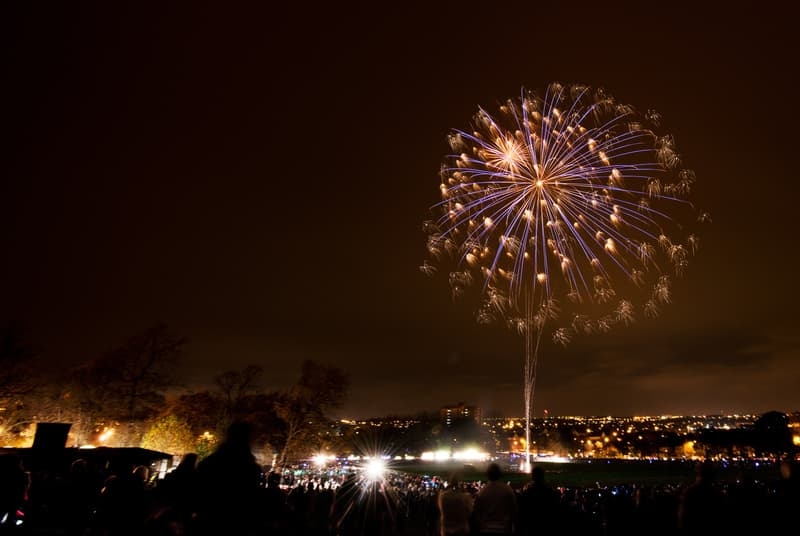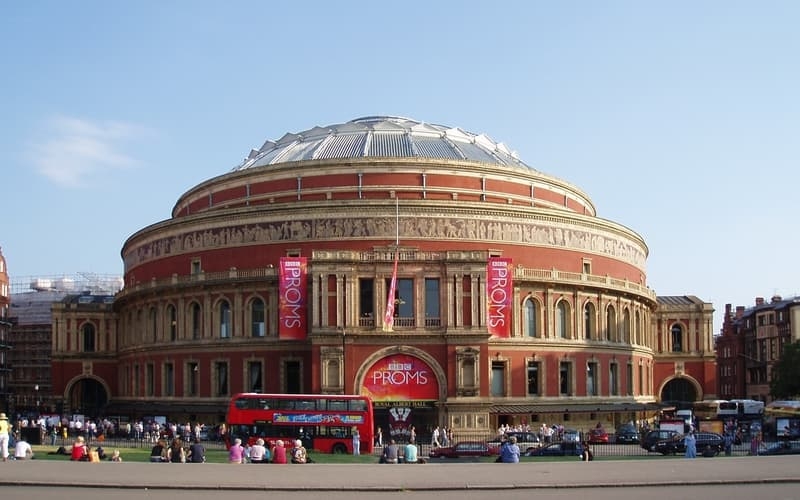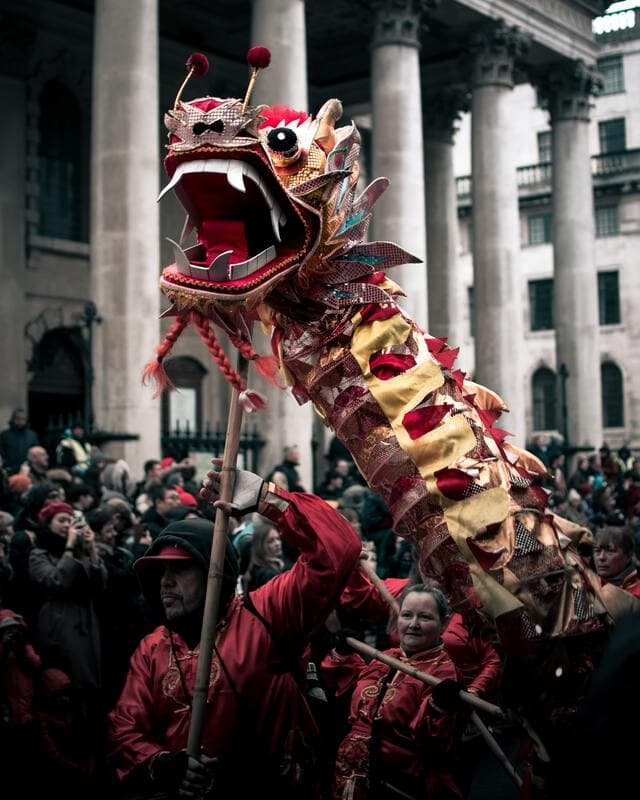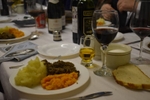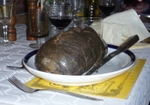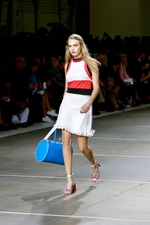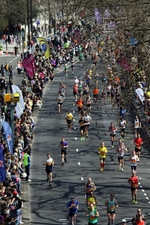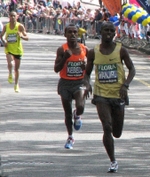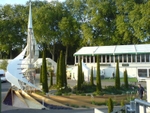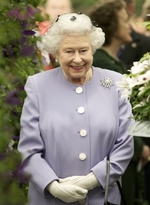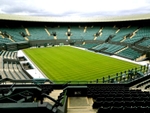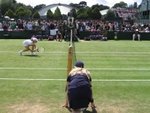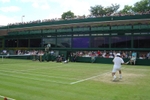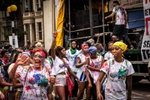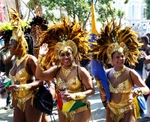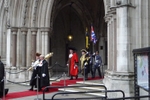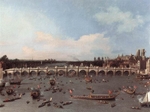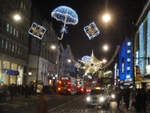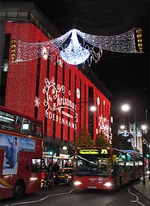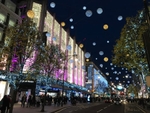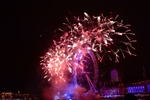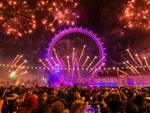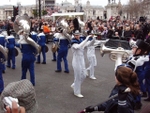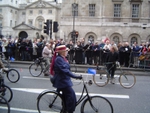1. January: Burns Night
Robert Burns is a Scottish institution. Born on 25 January 1759, he was a romantic poet—often referred to as Scotland's favourite son—who wrote, amongst other things, Auld Lang Syne.
Burns died young, at the age of 37, and he and all things Scottish are celebrated every 25 January on Burns Night.
The festival includes a welcoming toast by the host, the Scottish Selkirk Grace, a starter of Scottish soup such as Scotch Broth or Cock-a-Leekie, a main course of haggis (which is traditionally brought in accompanied by bagpipes), a "Toast to the Lassies", the singing of songs by Burns (such as Ae Fond Kiss), whiskey, kilts and Scottish dancing.
London restaurants such as Boisdale put on a special menu and events for those who cannot get north of the border. The next Burns Night festival will be celebrated on Monday 25 January 2021.
2. February: Chinese New Year
London will celebrate Chinese New Year in February 2021.
The Year of the Sheep—representing peace and prosperity—will be ushered in with celebrations culminating in a parade, on Sunday 12 February, down Charing Cross Road and Shaftsbury Avenue to Trafalgar Square.
The parade will include dancers, bands and a number of Chinese dragons. Artists will be performing on a temporary stage in Trafalgar Square, with stalls, street entertainers, bunting, red lanterns, lion dances, firecrackers and fireworks in the nearby Chinatown to the north.
London’s celebration of Chinese New Year is the largest event of its kind outside Asia. If you are planning on joining in the festival fun by eating at the hundreds of fabulous Chinese restaurants on or around Gerrard Street over this period, be sure to book in advance.
3. February and September: London Fashion Week
London Fashion Week is held twice each year, in February and September, and is London's most stylish event.
London Fashion Week is one of the “big four” fashion events, together with New York, Milan and Paris.
The February event shows off designs for that year’s Autumn/Winter season, with the September event being devoted to the Spring/Summer season for the next year.
Attended by over 5000 members of the press and clothing buyers, the event is held in Somerset House on the Strand and is best known for its catwalk shows. The September 2013 show had 58 such shows, over 120 designers revealing their new ranges, press from over 50 countries and saw over £120 million of orders being placed.
Whilst London Fashion Week is principally aimed at the fashion industry, London Fashion Weekend (which follows it) is accessible to members of the public, with discount fashion being offered in addition to catwalk shows.
4. April: the London Marathon
Established in 1981, the London Marathon is the world’s largest marathon, with over 36,500 finishing the event in 2012.
It is set over a largely flat course which takes in many of London’s most famous sights and landmarks, including Greenwich Park, the Cutty Sark, Docklands, Tower Bridge (the half-way point), Canary Wharf in East London, and Central London's Big Ben, Buckingham Palace and The Mall.
The course record is held by Kenyan Emmanuel Mutai (2 hours 4 mins 40 seconds) and the women’s record by England’s Paula Radcliffe (2 hours 15 mins 23 seconds).
The 2014 marathon was one of the best attended ever, on account of the warm weather. Kenyans Wilson Kipsang and Edna Kiplagat won the men's and women's races. British double Olympic champion and first time marathon runner Mo Fareh came eighth.
Amateur or fun runners make up most of the race’s entrants, giving the event a real festival atmosphere. Many run for charity, with an estimated £500 million raised for good causes since 1981.
Olympian Sir Steve Redgrave holds the fund-raising record, collecting £1.8 million in 2006.
Lloyd Scott is probably the most remarkable entrant, completing the course in a 50-kilogram deep sea diving suit in 2002.
The 40th London Marathon will take place on 4 Oct 2020.
5. May: the Chelsea Flower Show
The Chelsea Flower Show, hosted by the Royal Horticultural Society each May, is held in the grounds of the Royal Hospital Chelsea.
Arguably the greatest flower festival in the world, the CFS attracts 157,000 visitors each year, a number limited only by the 11-acre site. Members of the royal family open the show each year, with its principal attractions being the hundred or so show gardens and the weird and wonderful plants displayed in the Great Pavilion.
Horticulturalists compete for the Best Show Garden Award, with other accolades including the Best Courtyard, Chic, Artisan and City Garden gongs.
In 2013, the Trailfinders Australian Garden won the best garden award, with a Japanese garden winning the artisan award. The 2014 show saw the best garden award go to the Laurent-Perier garden, a Luciano Giubbilei designed contemplative garden with a central pond.
The next Chelsea Flower Show will be held between 18-22 May 2021.
6. June/July: the Wimbledon Championships
Founded in 1877, the Wimbledon Tennis Championships is the oldest and most important tennis event in the world.
Wimbledon is one of the four ‘major’ tennis events, the others being the Australian, French and US Opens, and the only one still held on grass. The Championships take place over two weeks in late June and early July each year, and culminate in a finals weekend, with the women’s final taking place on Saturday and the men’s on Sunday (followed by the Champions' Ball at an exclusive London hotel).
In 2021, the Championships will be held from 11 July.
Play takes place on Centre Court, with a capacity of 15,000 and now fitted with a retractable roof, No. 1 Court, with a capacity of 11,000, and 17 further courts.
The prize money has now increased with first round losers receiving £45,000 and the winners scooping a cool £2.35 million each. Novak Djokovic is the current men’s champion, and Simona Halep the women’s champion.
Wimbledon is also known for its ballboys and girls dressed in dark green and purple, the Royal Box, strawberries and cream, Pimms and lemonade, and rain delays. Tickets are hard to come by, with the vast majority allocated by oversubscribed public ballot.
A small number of show court tickets are available on the gate, but you will generally have to queue overnight (an experience in itself—there is a festival atmosphere amongst those queueing, with sponsors dishing out plenty of free food and merchandise).
General admission tickets allow spectators to visit the outside courts and are more readily available.
7. Summer: The Proms
Now in its 121st year, the Proms (aka the BBC Proms or the Promenade Concerts) are a series of classical music concerts.
Held at the Royal Albert Hall and other London venues each summer, the Proms aim to present a wide range of music to large audiences at reasonable prices.
There are now over 70 concerts each year, the most famous of which is the Last Night of the Proms. This concert, which takes place in early September, is devoted to popular classics (2013 saw the performance of works by Vaughan Williams, Britten, Handel and Rossini) and British patriotic numbers (such as Land of Hope and Glory, Jerusalem, the national anthem, and Rule, Britannia!). It brings the festival, the world's most important classical music event, to a fitting end.
Tickets cost between £12 and £100. Tickets for the last night of the proms are principally allocated to those who purchase tickets for at least five other proms, with a handful of further tickets available through a ballot and to those who queue on the day.
8. August: the Notting Hill Carnival
Attracting upwards of 1 million people, the late-August Notting Hill Carnival is one of the largest street festivals in the world (second only to Rio's annual carnival).
The two-day event, held since 1966, takes place in Notting Hill in the Royal Borough of Kensington and Chelsea. It involves dancers, musicians and floats winding down Great Western Road and along Chepstow Road, Westbourne Grove and Ladbroke Grove. The carnival parade sets off at about 9am each day and finishes at around 7pm.
This is undoubtedly one of London’s most exciting events, with Caribbean music (ranging from steel drum bands to reggae, R&B and funk), vibrant costumes, headdresses and body paint (there is usually plenty of flesh on display), and Caribbean food stalls (selling fare such as jerk chicken, goat curry, rice and peas, and rum punch). What a fantastic way to celebrate the end of summer.
The next Notting Hill Carnival will take place on 29 to 30 August 2021
9. November: Bonfire Night
Bonfire Night (aka Guy Fawkes Night) is a festival that originates from the 1605 plot on the life of King James I.
Plotters who wanted to see a Catholic monarch restored to the throne placed explosives underneath the House of Lords, to be detonated when the King opened parliament. The plan was discovered and Guy Fawkes arrested on 5 November.
When the news emerged, the people of London took to the streets and lit bonfires to celebrate. To this day, the Yeoman of the Guard searches the cellars of Parliament before its state opening by Queen Elizabeth II each year.
London hosts various impressive bonfire and fireworks events, with effigies of Guy Fawkes being burned on top of the pyre. They include events in East London's Victoria Park, Bishops Park, Alexandra Palace (complete with winter and German beer festivals) and Vauxhall Pleasure Gardens.
10. November: the Lord Mayor's show
The Lord Mayor of London is an office dating back to 1189 and the reign of King John.
The holder is elected for a one-year term and in modern times is responsible for the City of London Corporation and the marketing of the City as a financial and business district.
The Lord Mayor is elected by the Liverymen of the City of London’s Livery Companies at the end of each September. The day after being sworn in, he takes part in a parade—the Lord Mayor’s Show—from the City of London to the Royal Courts of Justice, where he swears his allegiance to the crown.
The spectacle includes the Lord Mayor travelling in a 1757 state coach, just a small part of a 3.5 mile long procession of horses, bands, dancers, performers and floats that takes place between 11am and 2.30pm.
The festival is watched by about half a million on the streets and a far larger television audience. In 2020, the Lord Mayor's Show will take place on 14th November.
This year the Lord Mayor’s Show will take place in a different, COVID-19 compliant form. It will be a televised event contained within Guildhall Yard. There will be no public access to view it from the pavements and people are encouraged to stay away from the area. You can watch it on BBC1 from 11am and we hope that you will.
11. December: Christmas events
The Christmas lights on Oxford and Regent Street are world famous.
Switched on by celebrities mid-way through November, the lights—depicting everything from Father Christmas to presents, snowmen, snowflakes and umbrellas—are hung across both streets and add extra cheer to the festive season.
In 2012, the switch was flicked by Robbie Williams, supported by Leona Lewis and boy-band Lawson. 2013 saw Jessie J press the button with James Arthur and Conor Maynard and in 2014 Take That were chosen to kick-off the Christmas season.
Many shops have their own Christmas light displays, most famously Harrods. There are scores of other Christmas attractions around London, including
- ice-skating rinks (for instance, at Somerset House, Canary Wharf, the Tower of London and outside the National History Museum),
- Christmas markets (such as Hyde Park Winter Wonderland),
- pantomimes (think Aladdin, Jack and the Beanstalk, Peter Pan and Puss in Boots) and
- carol concerts (including in grand venues such as Westminster Abbey and St Paul’s Cathedral).
12. 31 December: New Year's Eve Fireworks
London celebrates the New Year with Big Ben striking midnight.
Revellers will sing Robert Burns' Auld Lang Syne (meaning Days Gone By), and the New Year is ushered in in style with the UK's largest annual fireworks display.
The event is widely covered on television around the world and attracts around 250,000 spectators in viewing areas clustered around the London Eye. In 2014, the fireworks display lasted 15 minutes.
If you want to join in the celebrations on the night, you must have secured a ticket in order to attend – check back later in the year to find out how to bag tickets for the London NYE fireworks 2020.
Travel on the underground is free between 11.45pm and 4.30am.
13. 1 January: New Year's Day Parade
1 January sees the London New Year’s Day Parade kick off the year.
The parade leaves from the Ritz Hotel, Piccadilly at 11.45am, and travels down Regent Street, Pall Mall and Whitehall before ending at Parliament Square at around 3pm. The route was chosen to as to showcase as many of London's landmarks as possible, so as to ensure a large US television audience.
Over 10,000 performers from more than 20 countries take part. The parade is usually watched by around half a million fans lining the route and a television audience of over 200 million. The performers include marching bands, choirs, pipers, cheerleaders, cyclists on antique bikes, drivers of classic cars and buses, clowns and acrobats.
London’s 32 districts also compete to build the best float or costume in the London Borough Competition; the top entries get to nominate charities to share a prize pot of up to £50,000.
2015 saw the 29th annual New Year's Day Parade, celebrating London on the Move. As Bob Bone, parade executive director, explained:
"Coming to see the parade is without doubt the best way to start the year. Blow away the cobwebs, soak up the atmosphere, support your local borough entry and help raise some money for any number of great causes."
